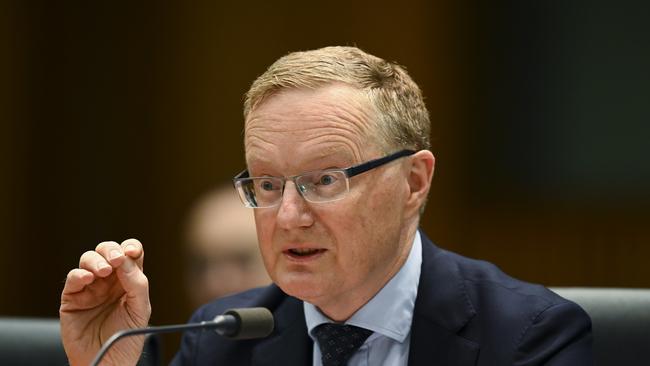The age of risk-free income is over with permanently low rates

Boak has done his own run of the new Reserve Bank model of the Australian economy, called MARTIN, and published the results. He found that in order to achieve the RBA’s unemployment and inflation targets, the cash rate would need to be minus 1 per cent, not the current 0.75 per cent, nor the 0.5 per cent the market is pricing for year-end.
This is getting serious. It confirms that we must get our heads around not being able to earn a risk-free living from any amount of capital … forever, at least for those alive today.
Making a living from a lump of money now requires taking risk, and will do so for a very long time. This is no aberration; it’s normal.
In essence it’s because the world, and Australia, are ex-growth. The period of high growth that followed WWII, during which global GDP grew by 4 per cent real and 8 per cent nominal, per annum compound, for 60 years, ended with the GFC.
It turns out that that period was the aberration. Throughout history, economic growth has been minimal. For those brief 60 years growth was supercharged with a burst of population growth, a huge expansion of debt and cheap fossil fuels. Each of those things has now finished: population growth is now decelerating permanently, pussy’s bow has been reached with debt, and the age of cheap fossil fuels is replaced by the expense of dealing with the consequences of it.
The world is now slipping irresistibly back into not much growth in output, not much inflation, and very low interest rates.
Those who design interest rates — central banks and bond market professionals, all of whom were born and raised in a world of 4 per cent real growth — are forced to constantly adjust their thinking downwards. The latest adjustment is brought by MARTIN.
According to Boak, himself a former RBA modeller, the bank’s new model predicts lower inflation and higher unemployment than the RBA staff did in the last Statement on Monetary Policy, and it implies that current and likely future monetary settings won’t be enough to change things.
Boak suggests that although the model calls for a cash rate of minus 1 per cent, that’s unlikely, even though negative policy rates have become commonplace in Switzerland, Sweden, Denmark and Japan. Instead, he suggests, the cash rate will be cut to 0-0.25 per cent and there will be quantitative easing (bond buying) of some $200bn.
MARTIN stands for Macroeconomic Relationships for Targeting Inflation, one of those tortured acronyms that also references the RBA’s address in Martin Place, Sydney. It was developed over the past three years and unveiled in August. The paper introducing it said it’s a “large model with 30 behavioural equations”, that can “provide a crosscheck on the staff forecasts”.
And so it does, but now the question arises as to whether the governor, Philip Lowe, and the RBA board believe MARTIN and its 30 equations or his staff.
To be specific, the model is predicting that unemployment rises to 5.5 per cent and then stays well above the RBA’s target of 4.4 per cent.
The model’s inflation forecast has the CPI picking up to 2 per cent in early 2020 and then staying put for the foreseeable future, whereas the SoMP (staff) forecast is for steady increases towards 2.5 per cent. An important point is that the RBA’s inflation target of 2-3 per cent is now a hard target, not an aspiration, and so is the achievement of full employment.
This week’s statement with the cash rate cut from 1 per cent to 0.75 per cent changed the words “make progress in reducing unemployment” in the July statement to a bald “reach full employment” this time, and “achieve more assured progress towards the inflation target” has been changed to the uncompromising prescription: “achieve the inflation target”.
As far as I know, the RBA has never been this explicit and rigid with its mandates. It is setting itself up for failure.
Another aspect of the new low-growth world is that nations are trying to steal growth from other countries with lower exchange rates.
There isn’t an explicit currency war going on but there might as well be: there’s no doubt that a lot of the monetary easing by central banks this year, including Australia’s, has been designed to defend against the possibility of the Federal Reserve specifically targeting the exchange rate with a return to a zero Fed funds rate and QE. Certainly President Trump is badgering them to do that.
If that happened, the cash rate would be zero in a flash and the RBA would be QE-ing like crazy, although as it shifts towards using the MARTIN model forecasts instead of the staff forecasts that’s probably going to happen anyway.
In other words, Australian investors, and in particular retirees, need to get used to earning next to nothing without taking risk — that is, the cash rate will be zero and the yield curve will be flat so there will be no extra payments for duration. They might even soon have to pay banks to look after their money.
Even now the 10-year government bond rate is below 1 per cent, and it’s likely to be even lower if Andrew Boak is right and the RBA starts buying bonds as part of a QE program.
It’s clear that risk-free investing is not going to produce any meaningful income for a very long time, which is a new problem for self-funded retirees who have been used to having at least part of their money in the bank, as well as in bank shares.
It is the end of risk-free income.
Alan Kohler is Editor in Chief of InvestSMART.com.au



We are indebted to Goldman Sachs’ Australian chief economist, Andrew Boak, for giving us a glimpse of the truth, even though it wasn’t quite what we were hoping for.